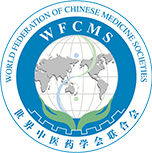Effect of herb-partitioned moxibustion on structure and functional prediction of gut microbiota in rats with irritable bowel syndrome with diarrhea
Release time: Aug 29,2023
Reading volume: 690
Objective: The objective of this study was to observe the effect of herb-partitioned moxibustion (HPM) on the gut microbiota of rats with diarrhea-predominant irritable bowel syndrome (IBS-D).
Materials and Methods: A total of 48 male rats were randomly divided into a normal control group and an irritable bowel syndrome (IBS) model group. Using acetic acid irrigation and constraint stress, an IBS-D rat model was developed. After the model was made, the IBS rats were divided into IBS, HPM group, and pinaverium bromide (PB) group. The HPM received HPM for 20 min every day, while the PB was given gastric perfusion once a day for 14 days. After modeling and treatment, the abdominal withdrawal reflex, fecal character score, and fecal water content of rats were scored, and a 16S rRNA sequencing analysis was performed on the gut microbiota.
Results: After treatment, the fecal character score and fecal water content in the HPM increased significantly, while visceral sensitivity decreased. Investigation of 16S rDNA sequencing revealed that α-diversity was reduced in the IBS, and HPM could increase the diversity of flora. The flora structure of IBS-D rats changed. HPM can increase the abundance of probiotics such as Akkermansia and reduce the abundance of opportunistic pathogens such as Bacteroides and Prevotella. Functional prediction analysis showed that the HPM was mainly related to the bacillary secret system, tricarboxylic acid cycle, and other pathways.
Conclusion: HPM can regulate the gut microbiota of rats with IBS-D.
Materials and Methods: A total of 48 male rats were randomly divided into a normal control group and an irritable bowel syndrome (IBS) model group. Using acetic acid irrigation and constraint stress, an IBS-D rat model was developed. After the model was made, the IBS rats were divided into IBS, HPM group, and pinaverium bromide (PB) group. The HPM received HPM for 20 min every day, while the PB was given gastric perfusion once a day for 14 days. After modeling and treatment, the abdominal withdrawal reflex, fecal character score, and fecal water content of rats were scored, and a 16S rRNA sequencing analysis was performed on the gut microbiota.
Results: After treatment, the fecal character score and fecal water content in the HPM increased significantly, while visceral sensitivity decreased. Investigation of 16S rDNA sequencing revealed that α-diversity was reduced in the IBS, and HPM could increase the diversity of flora. The flora structure of IBS-D rats changed. HPM can increase the abundance of probiotics such as Akkermansia and reduce the abundance of opportunistic pathogens such as Bacteroides and Prevotella. Functional prediction analysis showed that the HPM was mainly related to the bacillary secret system, tricarboxylic acid cycle, and other pathways.
Conclusion: HPM can regulate the gut microbiota of rats with IBS-D.

